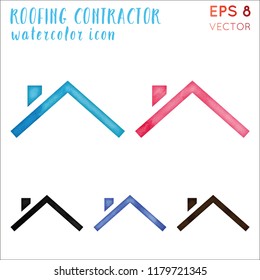A Thorough Structure For Establishing A Paint Contract: Important Additions To Keep In Mind
A Thorough Structure For Establishing A Paint Contract: Important Additions To Keep In Mind
Blog Article
Team Writer-Palm Cooley
When it concerns crafting a detailed painting contract, precision is vital. From defining the project scope to developing crystal-clear payment terms, each detail plays a crucial role in ensuring a successful end result. Envision having interior residential painter that not only lays out the project specifics but additionally safeguards both celebrations entailed. As you start this journey of creating a painting agreement, there are essential elements you wouldn't wish to overlook. Are you prepared to navigate via the details and nuances of developing an agreement that sets the stage for a smooth paint project?
Job Details and Range
When laying out the project details and scope in your painting agreement, it's critical to clearly specify the details job to be finished. Begin by providing a comprehensive summary of the painting project, including the surfaces to be painted, the type of paint to be used, and any type of certain shades or surfaces required. Define if any preparation work, such as sanding, priming, or loading fractures, is included in the range of job.
In addition, detail any type of added solutions like:
- Trim painting
- Wallpaper removal
- Surface fixings
that become part of the task.
Clearly specifying the task extent helps stop misconceptions and ensures that both celebrations are on the same page pertaining to expectations. commercial painters greenwood village functions as a referral point during the project to validate that the job is progressing as set. By specifying regarding the task information and scope in your painting agreement, you can lessen potential disagreements and make sure an effective end result.
Repayment Terms and Schedule
To guarantee a clear understanding of the economic facets of the paint job, it's vital to develop thorough repayment terms and a timetable in the painting agreement. Clearly lay out the overall project cost, consisting of any in advance deposit called for, development settlements, and the last payment. Specify the repayment techniques accepted, such as money, check, or online transfers, and indicate when each repayment schedules.
In addition to describing the payment terms, it's important to develop a settlement routine that aligns with project milestones or timelines.
For example, you can link repayments to certain stages of completion, such as after the initial prep work, upon completion of the primer layer, or following the final examination.
This approach ensures that repayments are made as job advances and gives both events with a clear understanding of the financial commitments throughout the job.
Legal Terms and Signatures
Include essential lawful terms and signatures in the paint contract to strengthen the agreement in between the events involved. https://docs.google.com/spreadsheets/d/17mv92qClCYBXal4GyfR7zZBqjW6UDro2FqmRmcpH7GQ/edit?gid=1145191170#gid=1145191170 that both parties recognize their civil liberties and obligations. These terms normally cover aspects such as task range, timelines, duties, and conflict resolution procedures.
Plainly outline the extent of job, defining what locations will certainly be repainted, the type of paint to be made use of, and any kind of unique demands.
Timelines ought to include start and conclusion dates, in addition to landmarks for progression checks.
Duties ought to detail who'll offer products, tools, and access to the property.
In case of conflicts, outline a fair and agreed-upon resolution process, which could include arbitration or arbitration.
Signatures from both the client and the paint specialist are essential to suggest approval of the terms and conditions. Make certain that all parties authorize the contract prior to work commences to stay clear of any kind of misconceptions or disputes down the line.
Conclusion
Finally, creating a comprehensive painting contract is crucial for an effective job. By detailing project information, settlement terms, and lawful agreements in advance, both the customer and professional can make sure a clear understanding of assumptions. This comprehensive overview helps to avoid misunderstandings and disputes, establishing the stage for a smooth and effective paint experience.
